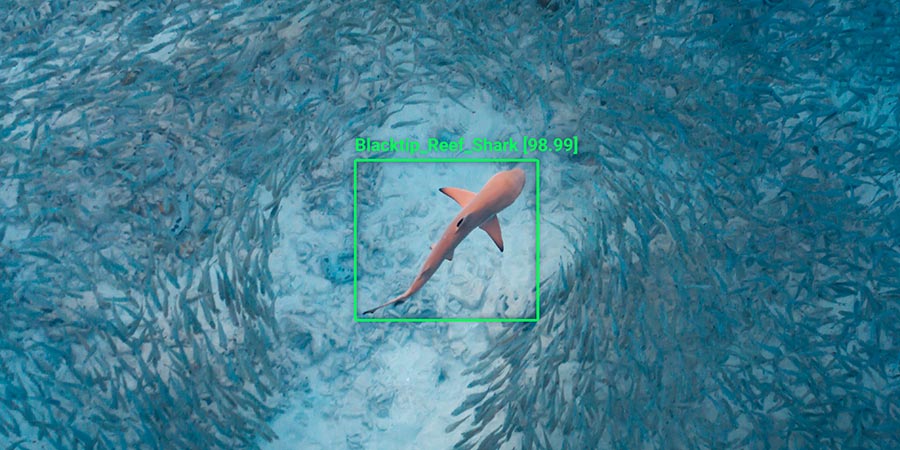
Discover World-Leading Technologies for Ocean Science
Discover cutting-edge solutions from leading global suppliers
Neousys Technology is advancing edge AI in aerial surveillance with its lightweight FLYC-300 computer, enabling drone platforms to perform real-time shark detection and environmental monitoring with enhanced speed and accuracy.
Surveillance traditionally relies on spotting towers and binoculars to observe the ocean from the shoreline, searching for indicators like dorsal fins or unusual fish activity. However, poor visibility caused by murky water or deeper locations can hinder these efforts.
Shark-eye drone systems improve shark detection by equipping drones with compact AI computers and high-definition cameras. These aerial platforms utilize AI-driven analysis to scan the ocean surface, identifying sharks, fish aggregations (which often act defensively against predators), and movement patterns that suggest a shark’s presence. Outfitted with an edge AI computer, Shark-eye drones provide a more efficient and proactive method for identifying nearby sharks.
Neousys FLYC-300
 Weighing just 298 grams, the integrated FLYC-300 computer supports 4S to 14S battery input via an XT30 DC-in connector. Built on the NVIDIA® Jetson platform, it delivers up to 100 TOPS of AI processing and includes extensive connectivity and expansion features such as 5G/4G—making it well-suited to live video processing, aerial imaging, and environmental surveillance such as shark monitoring.
Weighing just 298 grams, the integrated FLYC-300 computer supports 4S to 14S battery input via an XT30 DC-in connector. Built on the NVIDIA® Jetson platform, it delivers up to 100 TOPS of AI processing and includes extensive connectivity and expansion features such as 5G/4G—making it well-suited to live video processing, aerial imaging, and environmental surveillance such as shark monitoring.
The FLYC-300 is also equipped with a customizable Universal Asynchronous Receiver/Transmitter (UART) interface for seamless integration with flight control systems. True to all Neousys solutions, it incorporates the company’s rugged design principles and has undergone field testing to operate reliably in various environmental conditions—ideal for broad deployment in diverse scenarios.
The pairing of Shark-eye drones with the lightweight Neousys FLYC-300 AI computer represents a meaningful development in coastal monitoring. By merging advanced aerial imaging with robust edge AI processing, users are equipped with an effective tool for identifying sharks rapidly and accurately—even under difficult visual conditions. The system’s real-time performance and durable construction support reliable operation across changing environments.
Read the original article >>











